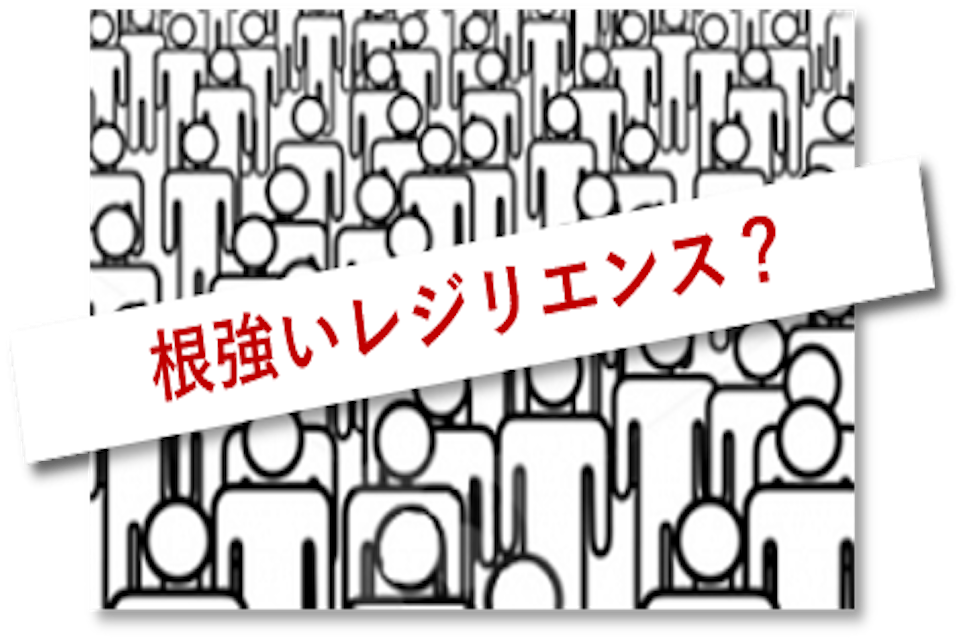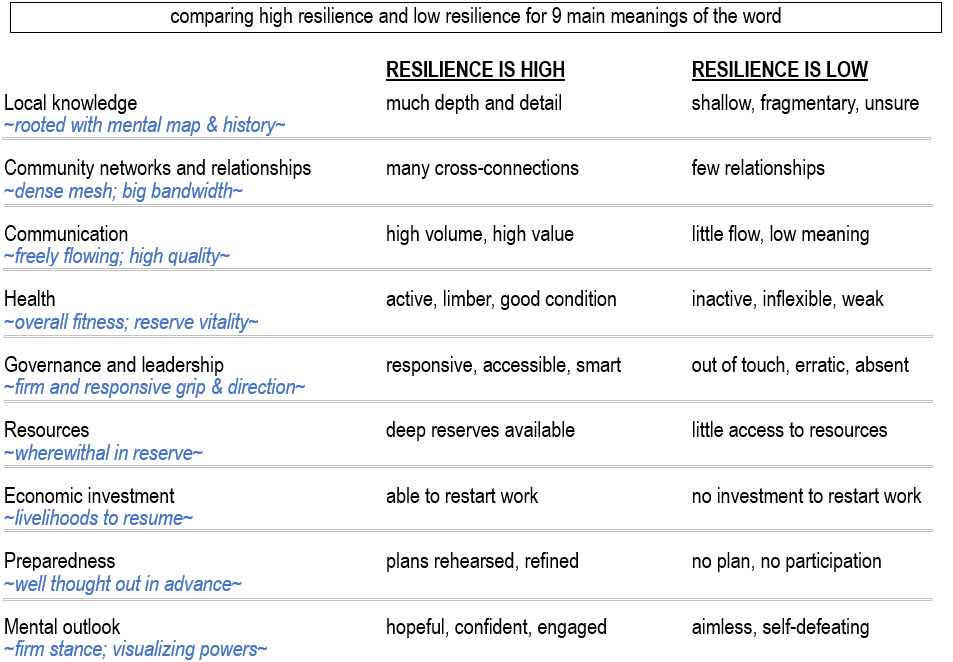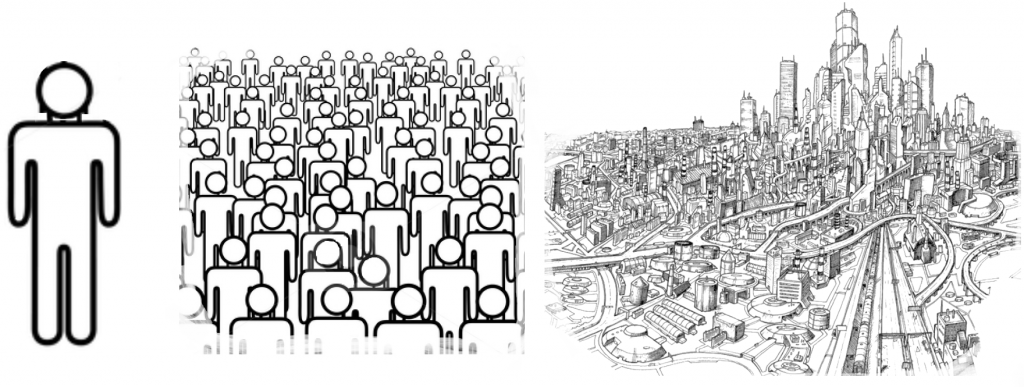03-6272-4372営業時間 9:00〜18:00
防災メディア

Resilient mind, organization, or the society all together?
2017/05/23
Disaster resilience has a positive meaning, but disaster vulnerability has a negative meaning. Some of the research centers in Japan and other countries take resilience as their main subject and disaster risk reduction as something that comes from this main pursuit. A prominent example is the Australian Institute for Disaster Resilience, https://www.aidr.org.au and in Japan there is the Resilience Research Council of Japan, www.resilience-japan.org, for example. In USA at Northeastern University in Boston, MA, there is the Security and Resilience Studies program, www.northeastern.edu/cssh/polisci/security-resilience-studies. And the international meeting place for government and non-government groups concerned with building up community resilience is online at www.zilient.org. The word roots go back to the Latin: re– “back” + salire “to jump, leap.” Like the flexibility contained in these word roots, the flexible ways that people use this word stretches from physical elasticity to the ability to rebound in an abstract sort of way. In February 2017 a research article appeared and reviewed 615 publications in which resilience is a central subject, “What Do We Mean by “Community Resilience” – A Systematic Literature Review of How It Is Defined in the Literature.” This article sheds light on the spectrum of meaning for this concept. The nine lexical fields that overlap in these publications are (random order) (1) local knowledge, (2) community networks and relationships, (3) communication, (4) health, (5) governance and leadership, (6) resources, (7) economic investment, (8) preparedness, and (9) mental outlook.

table to summarize the meanings of “resilience” the publications use for discussing emergency planning and disaster management
The upshot of the research article is that “resilience” by itself is too broad and multi-sided to be helpful in understanding the several phenomena meant by this word. Beyond the meanings of the word, perhaps it is necessary to think about the characteristics of each risk that faces a group of people, too, because each kind of risk will cause the people to use up their reserves in different ways. For example, one group of people may be well resilient to physical damage like flood or earthquake, but another group may be weak for physical destruction of buildings but may be strong for social relationships and mutual assistance. In any case the conditions to build up resilience are worth examining, as are the types of things that degrade resilience of a community at the level of household, neighborhood, or entire city district.
Having breadth and depth of cultural resources (culture capital: fluent expression of persuasive meanings, symbols, styles, examples), social and language know-how (social and linguistic capital: bank of contacts to call upon; procedural knowledge for Japanese society), time and money available to use (financial capital), and the mental outlook/emotional capacity for helping others allows the group to face disasters big or small, dangers that are personal or ones that affect the communities that they belong to.
This constant ebb and flow of danger and response is a basic fact of social life on planet Earth with its many seasons and active ecosystems. What may be different now is the pace of changes to society, livelihoods, physical mobility and communication bandwidth (exposed to more, able to reach out a long way, expectations for quicker results). The concept of “extreme weather events” can be applied equally well to the social climate – disruption, dislocation, discomfort have been with us before, but now these are more frequent and they occur in at a bigger scale in our separate lives and in our collective lives. So it is worth understanding the many meanings of the word resilient and to learn how to make these parts of resilience become stronger than before.
サイエンスクラフトとは...
サイエンスクラフトは防災計画の作成や防災訓練支援を数十年に渡って行っているコンサル会社です。お問い合わせはこちらまで。





